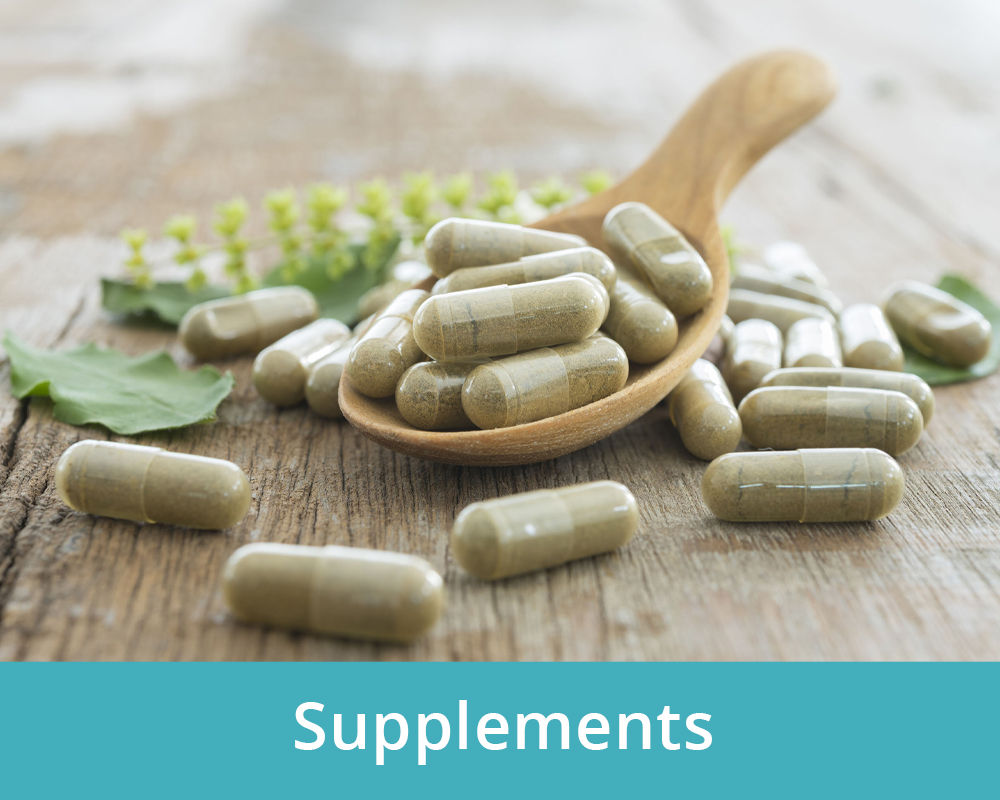
Nutrition Support To Help Manage Your Menopause Symptoms

The word menopause is often perceived as a daunting word to many women. By definition, menopause is the time in a woman’s life when her body stops menstruating. Specifically, menopause is confirmed 12 months after her final period. However, this is a simple definition, as the symptoms associated with menopause can last for years. Most commonly, symptoms include weight gain, hot flashes, night sweats, insomnia, changes to mood, and changes in muscle composition. These symptoms are mainly triggered by decreased levels of estrogen and progesterone.
Throughout adult life these hormones are responsible for regulating processes such as menstruation and pregnancy. They are also responsible for developing feminine physical characteristics such as wide hips and breasts during puberty. These hormones are also known to work with neurotransmitters to provide an overall mood boost. However, during menopause the decline in these hormones leads directly to symptoms that many women find challenging to navigate. This article will walk you through helpful nutrition tips to help manage these symptoms, so you can stay focused on life’s important activities!
Top 5 Nutrition Tips To Help Manage Menopause Symptoms
Have Healthy Fats
If you are experiencing weight gain as a symptom of menopause, consuming fatty foods is likely something you are avoiding. However, recent research shows that including healthy fats, such as omega-3 fatty acids, in your diet may be beneficial for women currently managing menopause.
One meta-analysis reviewed multiple studies which had a total of 438 menopausal women participate. Supplementation of omega-3 fatty acids was found to reduce both the frequency and severity of night sweats (1). It is important to note that there was no conclusive evidence found for the reduction of hot flashes or weight gain. So, while more research is needed, incorporating more healthy fats into your diet may be something you should consider if you are experiencing menopausal night sweats.
Commonly, omega-3 fatty acids are found in fish such as salmon and mackerel, and seeds such as chia, flaxseed, and hemp seeds. If you are looking for inspiration on how to incorporate more omega-3 fatty acids into your diet, check out our recipe page. Our Rosemary Walnut Crusted Salmon and Grain-Free Mediterranean Mackerel Pasta is loaded omega-3 fatty acids to best support you!
Pick Phytoestrogens
While the term phytoestrogen may sound intimidating, it is actually referring to estrogen compounds that are produced naturally by plants (instead of being produced by the human body). These plant-based compounds mimic the effect of estrogen in our body, but to a much weaker extent. This can be helpful at managing symptoms during menopause, when our natural estrogen levels are declining. The most well-known source of phytoestrogen comes from the soybean; however, they are also found in chickpeas, berries, flaxseeds, grapes, and more.
There has been controversy about the potential negative effects associated with the consumption of phytoestrogens, as it has been suggested that they can disrupt our body’s hormone balance. However, research points to the conclusion that in moderate levels there is unlikely to be any resulting negative impacts in humans (2). The same research alludes that it would take significant highly levels of consumption of phytoestrogens to have any toxic effect (2).
One research study examined 51 menopausal women who were provided with a high phytoestrogen diet over six weeks. The participants showed a decreased in symptoms including hot flashes, night sweats, and flushing (3).
Try this delicious Cinnamon Flax Pudding Parfait as an excellent breakfast or snack option to help you incorporate more phytoestrogens into your diet!
Consume More Fruits And Vegetables
Everyone recognizes fruits and vegetables as a healthy component of our diet, so it likely comes as no surprise that these foods are beneficial for supporting the symptoms of menopause. Fruits and vegetables are packed with a variety of vitamins, minerals, antioxidants, and fiber which benefit all of our bodily systems, including our endocrine system, the system responsible for our hormone levels.
There is no shortage of evidence supporting the increase in dietary intake of fruits and vegetables in menopausal women. The Women’s Health Initiative Dietary Modification trial evaluated the diet of an impressive 17,473 women in the united states. This diet modification included the reduction of unhealthy fats, and the increase of fruits, vegetables, and whole grains, for one year. Results showed that this diet was correlated with weight loss, and a reduction in hot flashes and night sweats (4). Even more fascinating is that women who lost >10% of their baseline body weight had higher likelihood of reducing their other symptoms including hot flashes and night sweats (4).
Even fruit and vegetable supplements, have been shown to be effective for helping menopausal women manage their symptoms. In one study, 91 menopausal women grape seed oil tablet supplements for 8 weeks. The participants a significant reduction in hot flashes and insomnia, as well as improved mood and increased muscle mass (5).
As we try to fit fruits and vegetables into our daily meals, coming up with creative recipes can be challenging. For new inspiration, check out our Cauliflower, Kale, and Lentil soup or our Citrus Quinoa & Bean Salad for fresh ways to get your fruits and vegetables.
Eat More Quality Proteins (Including Eggs)
Menopausal women are likely to experience a decrease in muscle mass and bone density secondary to their declining estrogen levels (6). Therefore, it is important for menopausal women to include in their diet, food that will keep their bones and muscles strong, such as protein. Protein is found in eggs, lean meat, fish, and vegetables such as beans and lentils. Protein supplements have also become a popular way for individuals to increase their protein consumption.
One study examined 131 postmenopausal women who took daily protein supplements for 1 year. Individuals who took the supplements, compared to a placebo, had significantly better bone mineral density (7). Another study found that daily protein consumption showed promise for preventing age-related muscle loss (8).
One way to incorporate more protein into your daily diet is to consider eating eggs for breakfast. Our Spinach Scramble is an excellent source of protein (and fruit)!
Say No To Sugar
Consuming high amounts of sugar isn’t recommended for anyone, however avoiding sugar, specifically refined sugar, has extra benefits for menopausal women. Of course, eating refined sugars leads to sharp rises and declines in your blood sugar levels. While this is known to have a well-studied impact on mood, the link is even stronger for menopausal women. Evidence shows that women who had diets higher in refined carbs and sugars had a higher incidence of depression (9).
Additionally, menopausal symptoms, such as hot flashes and night sweats, have been found to be associated with increases in blood sugar (10). Research also shows that menopausal women with diets high in refined sugar have poorer bone quality (11).
For a sweet option low in refined sugar, take a look at our Apple Berry Crisp recipe!
In Summary
The symptoms that come along with menopause can be challenging to cope with. However, research tells us that through dietary changes, it is possible to manage these symptoms. Filling your body with the good – such as healthy fats, phytoestrogens, fruits and vegetables, and proteins – while avoiding refined sugars may be able to help you, your loved one, or your client manage their menopausal symptoms.
References
- Mohammady, M., Janani, L., Jahanfar, S., & Mousavi, M. (2018). Effect of omega-3 supplements on vasomotor symptoms in menopausal women: A systematic review and meta-analysis. European Journal of Obstetrics & Gynecology and Reproductive Biology, 228, 295-302. doi: 10.1016/j.ejogrb.2018.07.008
- Patisaul, H., & Jefferson, W. (2010). The pros and cons of phytoestrogens. Frontier Neuroendocrinology, 31(4), 400-419. doi: 10.1016/j.yfrne.2010.03.003.
- Washburn, S., Burke, G., Morgan, T., & Anthony, M. (1999). Effect of soy protein supplementation on serum lipoporteins, blood pressure, and menopausal symptoms in perimenopausal women, Menopause, 6(1), 7-13. doi: 10100174.
- Kroenke, C., Caan, B., Stafanick, M., Anderson, G., Brzyski, R., Johnson, K., … & Wallace, R. (2012). Effects of a dietary intervention and weight change on vasomotor symptoms in the Women’s Health Initiative. Menopause, 19(9), 980-988. doi: 10.1097/gme.0b013e31824f606e
- Terauchi, M., Horiguchi, N., Kajiyama, A., Akiyoshi, M., Owa, Y., Kato, K., & Kubota, T. (2014). Effects of grape seed proanthocyanidin extract on menopausal symptoms, body composition, and cardiovascular parameter in middle-aged women: a randomized, double-blind, placebo-controlled pilot study. Menopause, 21(9), 990-996. doi: 10.1097/GME.0000000000000200.
- Maltais, M., Desroches, J., & Dionne, J. (2009). Changes in muscle mass and strength after menopause. Journal of Musculoskeletal and Neuronal Interactions, 9(4). 186-197. doi: 19949277
- Konig, D., Oesser, S., Scharla, S., Zdzieblik, D., & Gollhofer, A. (2018). Specific collagen peptides improve bone mineral density and bone markers in postmenopausal women – a randomized controlled study. Nutrients, 10(1), 97-101. doi: 10.3390/nu10010097.
- Paddon-Jones, D., & Rasmussen, B. (2009). Dietary protein recommendations and the prevention of sarcopenia. Current Opinions in Clinical Nutrition and Metabolic Care, 12(1), 86-90. doi: 10.1097/MCO.0b013e32831cef8b.
- Gangwisch, J., Hale, L., Garcia, L., Malaspina, D., Opler, M., Payne, M., … & Lane, D. (2015). High glycemic index diet as a risk factor for depression: analysis from the Women’s Health Initiative. American Journal of Clinical Nutrition, 102(2), 454-463. doi: 10.3945/ajcn.114.103846.
- Thurston, R., Khoudary, S., Sutton-Tyrrell, K., Crandall, C., Sternfeld, B., Joffe, H., … & Matthews, K. (2012). Vasomotor symptoms and insulin resistance in the study of women’s health across the nation. Journal of Clinical Endocrinology and Metabolism, 97(10), 3487-3494.
- Hardcastle, A., Aucott, L., Fraser, W., Reid, D., & Macdonald, H. (2010). Dietary patterns, bone resorption and bone mineral density in early post-menopausal Scottish women. European Journal of Clinical Nutrition, 65(3), 378-385. doi: 10.1038/ejcn.2010.264











